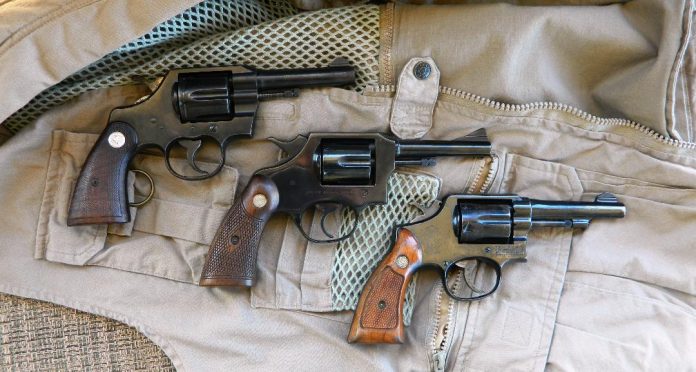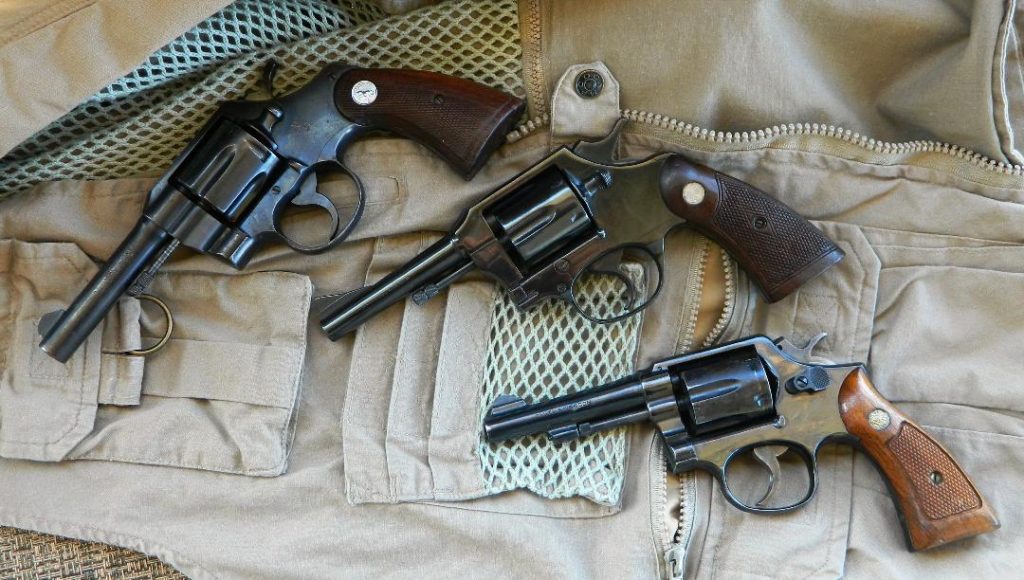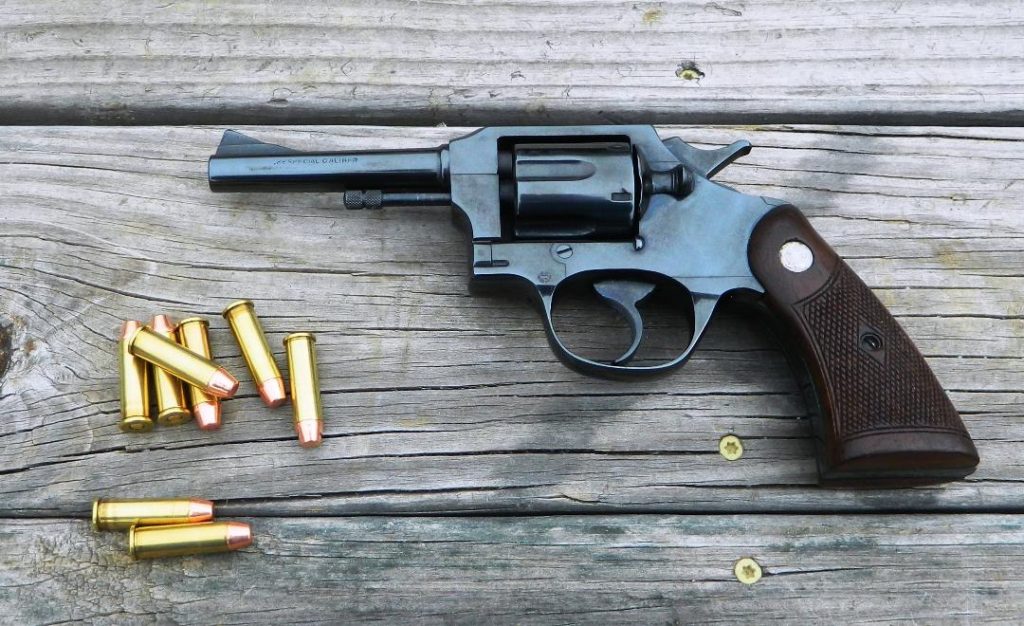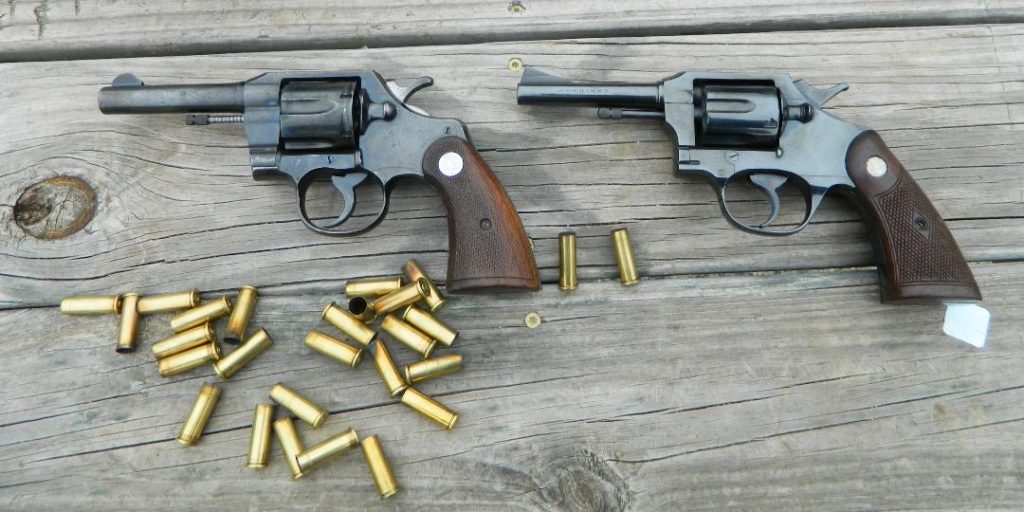
I am enthusiastic concerning any firearm I may test, shoot and generally learn about. I like the smell of gunpowder smoke and the thump of a handgun in my hand. I do not need Byzantine appointments but the more reliable guns are the most interesting. I am no fool and carry proven reliable handguns for personal defense. But sometimes the SIG and the Series 70 simply ride in the holster during range trips while I fire a number of odd firearms. Well I am a gunwriter and if you didn’t know what I for a living you would think me a little odd anyway. The revolver illustrated is the only one I have seen of the type. Of course I have seen many Miroku firearms, just no handguns. Miroku has manufactured quality firearms for Browning for years. These lever action, rolling block and smoothbore firearms are excellent examples of the gunmakers art. The Miroku revolver is little known. And do not go rushing to get Dad’s out of the gun safe- there is little to no collector interest and it isn’t worth much. But it is interesting. During the 1960’s most Asian police that had been indoctrinated into the American or British way of doing things carried revolvers. Hong Kong used the Smith and Wesson Model Ten. Singapore issued the Webley .38 with an odd cross bolt safety. The Japanese police were forbidden from using self loaders by treaty terms so the revolver was the obvious choice. A long association with Smith and Wesson didn’t hurt anything. The Japanese elected to develop their own revolver. While the light Nambu revolver, similar to the Chief’s Special, was the more successful the Miroku is worth a look.

The Japanese have two deficits in their history. The first is a lack of any heritage of freedom. They have taken well to the concept after 1945. The other minor deficit is a dearth of handgun heritage. Some such as the 8mm revolver were so poor as to be pathetic. A 450 fps projectile simply isn’t impressive. The Nambu self loader is often criticized but when you fire it you realize that it is of high quality, with an excellent trigger action. The cartridge is probably no more effective than the .32 ACP and rather over engineered. It is interesting to examine what occurred when the Japanese designed their own revolver. They did not simply copy an American or European design. The Miroku revolver, at first glance, looks like a love child between Smith and Wesson and Colt. The general outline isn’t close enough either Colt or Smith and Wesson to be instantly recognizable as a clone. I have seen plenty of Spanish ironmongery over the years, some of which mocked the Smith and Wesson and some of which was more original. I have seen the Dan Wesson type cylinder latch and Ruger type action access from the Basque. But the execution was poor. On the other hand the Japanese get an A for effort and execution. The revolver is blockier than our own products to the eye but fits a K frame holster. The barrel is a pencil barrel just as the Model Ten of the day was, and the grip is more similar to the Smith and Wesson than the Colt. The grip tilts at an odd angle but in practice it works. Trigger reach is just slightly shorter than the Smith and Wesson, but it doesn’t cramp my average size hands.
The Miroku uses a Colt type cylinder release. The release is pulled to the rear to release the cylinder. The cylinder rotates clockwise in Colt fashion. (The Smith and Wesson rotates counter clockwise.) The lockwork is powered by a leaf spring and more closely resembles the Smith and Wesson than the Colt. The handle is much like a Smith and Wesson. The revolver is finished in a handsome blue finish with no flaws. The revolver illustrated is over thirty years old and appears as new and must not have been fired very much. The story as far as I am able to research is that the Miroku was developed for the Japanese and Asian police market. When a lighter .38 caliber revolver was adopted, Miroku chose to attempt to sell the revolver in America. From 1967 to 1984 production chugged along at about 20,000 units a year. The pistol was discontinued in 1984. There was also a five shot Liberty Chief revolver produced, but that is a different tale.

The Miroku is usually marked with some type of Police Special marking and I have seen a MK VII illustrated. They are essentially identical. My .38 Special is marked Special Police Model. I have also seen an image of an adjustable sight version similar to the Combat Masterpiece. My revolver features a four inch barrel with a steep serrated front sight. The rear sight is a slim groove in the top strap. The action, as I mentioned, is a mix of Colt and Smith and Wesson. Cylinder rotation is clockwise but the mechanism more closely resembles the Smith and Wesson. When cycling the action the Miroku feels more like the Smith and Wesson and may be staged in the same manner, holding the trigger just before it falls and confirming the sight picture.
The Miroku was purchased on whim at a local pawn shop for two hundred and twenty dollars, about all it is worth. After all it doesn’t have a lot going for it and spare parts are non existent. No, you cannot take a little bit of this and that and use Colt or Smith and Wesson parts. They do not fit. A feature that many found detracts from the revolver’s looks is the large hammer. While ‘gawky’ came to mind the hammer certainly imparts a heavy blow on the primer. Most Miroku handguns seemed to have been fired little. There are more than a few for sale at various used gun sites and alls seem in like new condition. I elected to fire the piece against some Yankee steel and see how it fared. In this regards, the revolver did well. I took my well used Colt Official Police and Smith & Wesson Model Ten to the range along with a few rounds of ammunition. I ended up matching the Miroku primarily against the Colt. I can fire the Colt just a little better than the Model Ten, so I matched the Miroku against my best gun. In the initial firing for GAT I used the Winchester 130 grain FMJ. The load clocked 794 fps in the Miroku, 765 fps in the Colt, a normal deviation. However, the chamber of the Miroku was tighter than the Colt or the Smith and Wesson. The cartridge crimp caught on the edge of the Miroku chamber and the rounds had to be carefully inserted in the Japanese cylinder. Hmmm—I thought perhaps I had a match grade chamber and the piece would be pretty accurate. No such luck, but the Miroku did OK. Firing double action the Miroku was a pleasure to handle and the sights were well regulated at 15 yards. I could stage the trigger and keep steel plates hopping. The action is difficult to qualify. The Miroku is about as smooth as the Colt but will stage like the Smith and Wesson. The odd shaped grip actually felt comfortable in the hand and presented no problem in control. Trigger reach was noticeably different than the Yankee revolvers. Most feel the Smith and Wesson fits their hands better than the Colt, and the Miroku seemed more similar to the Model Ten grip. When firing off hand the major drawback was the sights. The sight groove in the top strap is not as wide as the Colt or Smith and Wesson revolvers. The Colt in particular was superior. This limited double action, rapid fire accuracy. At personal defense range the Miroku could be fired as accurately, quickly, as any revolver but in precision work the sights were a limiting factor.

After firing the spent cases ejected smartly. The cylinder isn’t that tight, rather the edges of the cylinder need to be chamfered, I believe. When firing light loads the Miroku was very pleasant to fire. I broke out a box of the Black Hills Ammunition 125 grain JHP + P. I like this load as it is not only accurate but offers good penetration and expansion. I had a surprise when clocking this load over the Competition Electronics chronograph. From the Miroku, this load clocked 866 fps. A little slow for a +P, I thought. From the Colt the load averaged 925 fps, right on the money for my expectations. Curious, I brought the Smith and Wesson out of the range bag and recorded a velocity of 907 fps. The Miroku ran slow, which doesn’t really mean anything. The push from the +P load was greater than the standard loads but not unpleasant. I moved to firing the revolver for groups off of a bench rest. I attempted to achieve the most favorable conditions for accuracy. I fired at 15 yards rather than 25.
Firing the piece from the benchrest with the Black Hills Ammunition 148 grain wadcutter the Miroku exhibited a 2.25 inch group on average. My most accurate .357 Magnum Model 27 will group these loads into 1.25 inches at 25 yards, lest you think this target grade load isn’t a tack driver. The Smith and Wesson and the Colt in particular were more accurate. In practical terms, tactically, there isn’t anything one revolver will do the other will not. Only an accomplished shooter will be able to demand the superior accuracy the Colt is capable of.
For what it was designed to do, compete and win the market, the Miroku didn’t make it. But it isn’t a bad gun. As a credible double action .38 caliber revolver the Miroku is far superior to the Brothers Hermanos and other ironmongery and seems smoother than early model Taurus or Rossi production. Fit, finish and heat treating seem up to par although there were tool marks on the frame under the crane. Its appeal is as an oddity, but odd as it is the confluence of design doesn’t come off that badly. The designers could simply have produced another clone of the Smith and Wesson but they did not. They probably thought they were combining the best features of the two greatest police revolvers in the world. Unfortunately at the time Smith and Wesson was simply burying Colt in police sales and the Colt like appearance probably did not help the Miroku. Conversely the Mireba ‘New Nambu’ Model 60 .38 is a straight up copy of the Smith and Wesson Model 36 with three inch barrel, heavy grips and a lanyard ring. It beat the Miroku in the race for Japanese police sales, although Miroku’s delayed arrival on the market may have been a hindrance as well. In the end the Miroku Police .38 is simply an ink dot on the page of history, not a footnote. It is interesting and if purchased cheaply could serve as a truck gun or recreational shooter.



